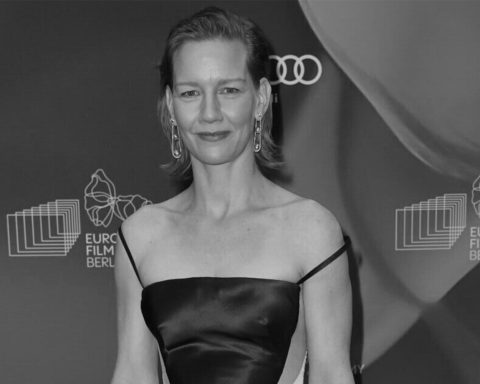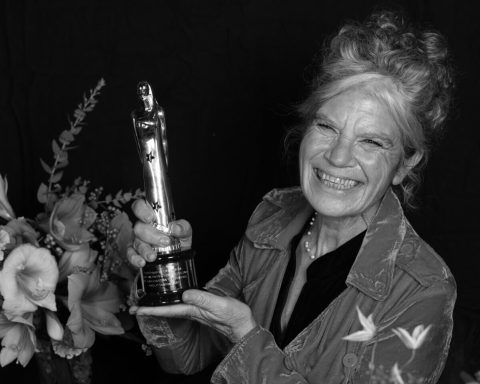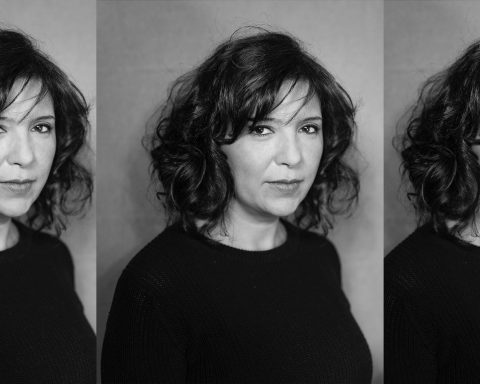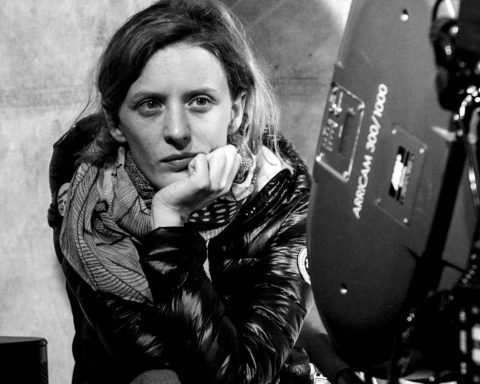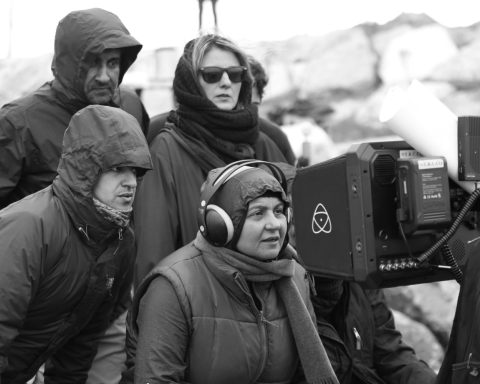Following her studies at the Lodz Film School, Poland, Kate McCullough teamed up with Michael Lavelle on Ken Wardrop’s “His & Hers,” where they jointly won the Cinematography Award in World Cinema Documentary at Sundance 2010. This success launched McCullough on a run of documentaries, including “Here Was Cuba” (2013), “The Farthest” (2017), for which she was nominated for an Emmy in Lighting Design, and Thin Lizzy frontman Phil Lynott’s “Songs for While I’m Away” (2020), which picked up an “Award for Excellence” at the 2022 Guild of Television Camera Professionals. She also lensed “I, Dolours” (2018), a docudrama by Maurice Sweeney, for which she was awarded the coveted Golden Frog for her cinematography at Camerimage in 2018. She then began shooting drama where she worked on the second block for the Element produced “Normal People” (2020) with director Hettie Macdonald and won the Irish Film & Television Awards for Best Cinematography in 2021. McCullough shot the acclaimed Irish language film “An Cailín Ciúin” (“The Quiet Girl”) (2022), which won the Grand Prix in the Generation Kplus program at the 2022 Berlinale. Her exacting work on this feature has garnered her Best Cinematography at the 2022 Irish Film & Television Awards and more recently earning her an Excellence Award in Cinematography at the European Film Awards 2022. More recently McCullough has teamed up again with Hettie Macdonald on her latest feature “The Unlikely Pilgrimage of Harold Fry” (2023), based on the book by the same title by Rachel Joyce. McCullough is a member of the Irish Society of Cinematographers and Illuminatrix.
At this year’s European Film Awards, Tara Karajica talked to Kate McCullough about her career in cinematography so far, women cinematographers and her work on “The Quiet Girl.”
Have you always known you wanted to be a cinematographer? How did you become one? How did you get into film?
Kate McCullough: The short answer is that I was always very driven by image-making and I was a kid that spent a lot of time drawing and painting and making things. I think at that point I did think: “Okay, I’m going to be a painter.” In the classical sense. But then, somehow I started watching some documentaries in my teens and started to become a bit curious about how films are made, who was behind the camera and just fascinated by the idea of being welcomed into different situations that were completely different to my own upbringing and how that could be as a documentary filmmaker. So, I think, actually, that was the driver and I decided to apply to film school and I applied for both a separate course in Photography and also then Film, so still getting my head around the idea of filmmaking. I was still pretty naive to it, but I got a place in the film course. There was a rumor going around that somebody had been accepted by mistake in the course. And, I was convinced that was me because I really didn’t have much experience. In my application, it was just photos and stuff. I think going into the course, I was a bit intimidated because there were a lot of people with a lot of experience and much older than me and a lot of guys. There were four women in a class of twenty-four. So, it took me probably about two years to get a hold of the camera properly, but I always knew that that was my first passion and it always held. Somehow, I wasn’t interested in directing or producing or sound. I did a bit of editing in school and I think that helped a bit in terms of understanding my work as a cinematographer. But that was very much focused towards wanting to operate.
How do you choose your projects?
K.M.-C.: If I connect with the script in some way and also connect with the director, it’s a win-win. I mean, of course, we never know how films are going to turn out. I think the first part is to relate to the script in a strong way so that you know if you’re going to commit a lot of time and energy to a project. For me, I have to be interested in telling the story. And, also a project that is maybe going to test me in a new way, that forces me to think a bit differently photographically. I quite like that.
You have worked a lot in documentary before and then you switched to drama. Which one do you prefer? What is the difference in terms of the work process?
K.M.-C.: So, right now, my energy is very much on drama. It will take quite a lot for me to go and shoot a documentary, I think, at the moment because I feel like there’s so much to learn and explore in the drama genre. I guess I’m very grateful for the time I spent shooting documentaries or learning a huge amount and gathering a great library of experience in visual references. It is such a great training ground, where you get to establish your backbone and sensibility towards stories. So, I think it was a great period of time, but I reached the point where I wanted to craft the image of it more; I wanted to have more time with creating a plan and dreaming a little bit within the story. And, I guess, with documentary, it’s more reactive and you’re having to just try and anticipate things, but it’s very much an observational reactive mode. So, I think drama just allows me to express myself a bit more.
What attracted you to The Quiet Girl and how did you get on board this film?
K.M.-C.: So, The Quiet Girl is an adaptation of a short story by Claire Keegan called Foster. And, I had read it a number of years ago. So, when this director contacted me by email and said: “Look, we’re doing this short story. Would you be interested in having a read?” I immediately wrote back and said: “Yes, I love this story!” It’s beautifully written and very economical and when you read the story, you can see it somehow. It’s not an easy adaptation to the screen, but it’s a close relative to cinema somehow. A lot of books I think can be tricky to decipher how and where you’re going to begin, how to handle such a huge task, but I think with a short story, it tends to adapt itself to the screen quite well. So, we met up and we had a really great chat and just seemed to get along from the very start. And, actually, it felt like he was an old friend or something. And, even though we hadn’t made any films together before, I felt like we had a whole back catalogue of projects we’ve worked on. There was an immediate kind of shorthand there.
Can you talk about working with the director and his vision on the film?
K.M.-C.: The film is based on this young girl’s perspective. So, you could say it’s the POV type of film, but also we do step out of her point of view quite a bit as well, but it was important to give this childlike quality to it. So, we decided to go with the more boxy aspect ratio, the one that is 1:37, to close off the world a little bit to her, that she still had to explore – that sense that there was still more to understand beyond the frame. Also, I think this aspect ratio emphasizes the verticality, this idea of her being still small in the world and the adults up above her height. A simple enough idea, but that seemed to lock in quite nicely with the story. Ultimately, we were going to be economical in the language of it, uncluttered and restrained, because the writing was like that. There’s very little extraneous words or descriptions within the story. And, I think, when we found the locations, they were a big influence on how we were going to photograph the film as well. I tend to get quite a lot from locations and start to absorb the space and understand how the light is playing and how you might film through doorways or how to show the space and the nature through the windows, like the layering of interiors and exteriors within the same shot. Nature is, obviously, a big theme in the film and we filmed quite close to where I grew up. So, it did resonate with me. I was familiar with these spaces, these farm buildings and fields and animals. So, it was quite cathartic, I think, as a project to film. We did talk about Lynne Ramsay’s work a little bit, Ratcatcher and Gasman. So, ultimately, we were striving for a very authentic quality. If something felt a little bit out of character or not right for the film, we would just drop it. I think we’ve had a very similar instinctual reaction to things like that. Colm, the director, comes from a documentary background too, so I guess that’s sort of burned into a sense of something feeling real or having weight to it.
Can you expand on your artistic goals on this film and how you realized them?
K.M.-C.: I guess there is an element of the things that are unsaid. There is actually very little dialogue in the film, but then when people speak, they might say something that means something else. So, I was interested in creating a space within the frames, or when characters left the frame to not be afraid of the emptiness and to maybe find the character again in the same shot. I suppose just this sense of a slight other presence in the house, apart from the people that we see in shot – like the moment in the boys’ bedroom, I noticed that the sun was shining through the trees and creating this kind of projection of life on the back wall and Colm and myself turned to each other and said: “Oh, wow! That’s interesting! Can we use that as a sort of slight indication or a slight kind of unsettling character to that space, to the boys’ room?” So, I guess there’s all these little subtle layerings of visual motifs that maybe start to get the audience thinking about things that are unsaid or preparing them for the shock that comes towards the end of the film.
Can you talk about your role models in cinematography, especially in terms of female role models, because there weren’t many when you were starting out, as well as the underrepresentation of female cinematographers today?
K.M.-C.: Yeah! No, there weren’t many when I began! And, I think that that partly affected my progress in a sense that I don’t think I fully believed I could be a cinematographer until I went to Poland. I went to the Polish Film School in Lodz for a couple of years, and I met Jolanta Dylewska there who’s a female Polish cinematographer. And yes, there was that thing of meeting somebody in the flesh and realizing: “Okay, they’re actually making a living out of being a cinematographer. And, maybe it’s possible that I can do the same thing.” It’s just that thing of “seeing is believing.” There, obviously, is a huge dearth of women particularly in the camera lighting and grip departments, but that is changing, but it’s slow.
Who is your favorite female filmmaker and who would you like to work with?
K.M.-C.: I would love to work with Céline Sciamma. She’s great. The last film I saw just before COVID arrived, I rushed out to the cinema before it closed to watch Portrait of a Lady on Fire. It just blew me away. A beautiful piece of filmmaking.
Do you have a favorite project among the ones you’ve worked on?
K.M.-C.: I’m personally attached to them all in some way. Because you invest all this time and care and love into them. With The Quiet Girl, I guess I felt sort of free to express myself as a cinematographer in some ways that I haven’t been able to do before. I think maybe I was holding back a little bit before. So, with this film, there was a sense of trust there and it was a nourishing collaboration with Colm and so it just felt like I could share things with him and suggest things even if they seem ridiculous, that it was a safe space to figure things out.
What is your dream project?
K.M.-C.: I don’t know. I think for me, it’s a script that really gets me thinking differently about the world. I love when my perspective is just shifted when I come out of the cinema. That, for me, is the goal of filmmaking. When you’ve forced the audience to think differently about their circumstance or world around them. So, my dream project is doing that, continuing to do that.
In your opinion, what is the artistic input of a cinematographer?
K.M.-C.: It depends from project to project. You might have a film that’s really driven by the visuals and very little by dialogue. Or, you might have a comedy show that’s allowing the performers to lighten up the screen, but you’re having to shoot wider and below while the performances take place. So, it just depends on what the challenge is, but I guess, as cinematographers, we’re making images for the screen and it’s a collaboration with the production designer, the costume designer, the director, of course. So, it’s trying to get everybody on the same page and converge at the same point so that when you’re registering through the lens, you’re all on point. And, the image is only as good as everybody else around you.
What do you think of the state of cinematography today?
K.M.-C.: Well, I’m quite happy that there is a definite kind of embrace for female HoDs. I think that’s obviously way overdue. But I’m fortunate enough to be working in a time when it’s happening. There is a change and I think I maybe worry a little bit about the future, whether we will be of any use to anybody. But that’s for another day, this conversation. I think cinema is really in a very tough space right now. But remarkably, people still continue to make films. Particularly now, it’s admirable to see people still trying to carve a film in the current climate.
What are your next projects?
K.M.-C.: I’m reading scripts at the moment. So, I’m planning my next move. And, I have just finished a commercial.
Photo credits: European Film Academy.
This interview was conducted at the 2022 European Film Awards.





